My fingers are numb and my toes are throbbing with icy coldness. I am once again in the deep freeze of -21˚C with a significant head wind thanks to the fans. I am fully garbed in big red and five other layers as well as two pairs of wool socks and still, the cold finds a way to seep in. Thankfully, I can step in and out as necessary, unlike being in the field, but if I step out too often the work doesn't get finished. So, I stuff my gloves with hand warmers and keep myself moving. We work for two hours in the cold with breaks about every 20 minutes just long enough to warm up the fingers.
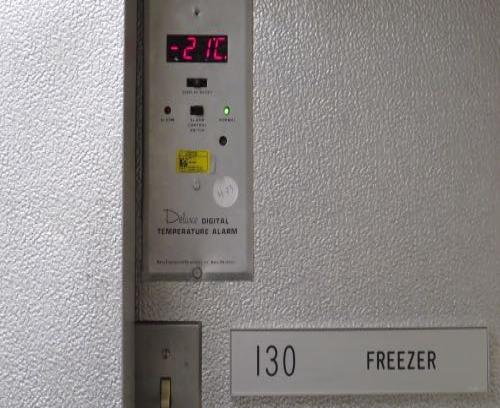 A very cold room indeed!
A very cold room indeed!
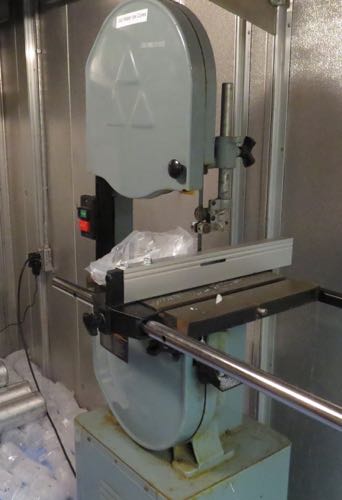 A look at the band saw we use to cut the thin sections and half sections used for melting.
A look at the band saw we use to cut the thin sections and half sections used for melting.
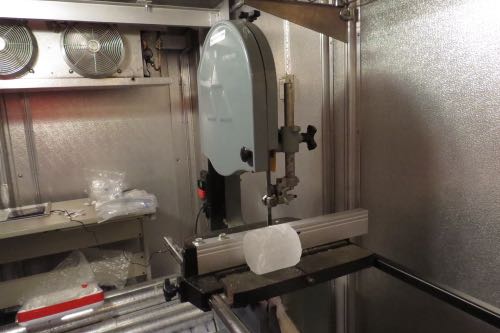 A look at the fans above our work space that keeps the cold air blowing right at our heads. Brrrr. You could develop frost bite in here!
A look at the fans above our work space that keeps the cold air blowing right at our heads. Brrrr. You could develop frost bite in here!
What work is happening in the cold room? I am making thin sections of our ice cores and photographing them. Hongjie takes the thin sections and brushes them to remove debris and frost to reveal a 'clean' thin section before I photograph them under two dark shades/gels set at 90˚ angles. We also cut sections for Yongli to melt so he can run salinity, pH, conductivity and a few other stable isotope measurements outside of the cold room. Sadly, Yongli cannot spend time in the freezer. Our last field day yielded a nasty frost bite to his cheek, likely from riding his snowmobile with his helmet shield up to avoid fogging on the lens. We discovered it only after getting back from the field as his face mask covered any signs of it. He is recovering and will be okay with time, but it is a definite reminder of the harsh conditions that exist here and how quickly things can turn south.
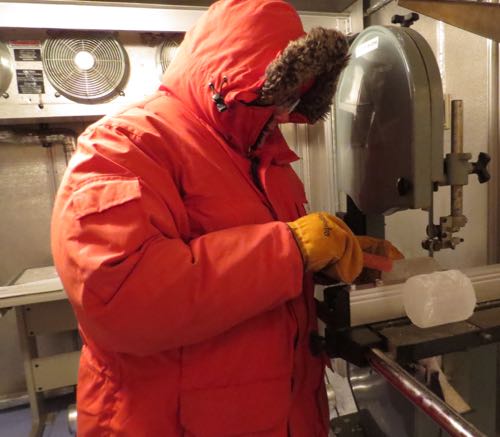 Here I am actually using the saw to cut the cores in half and yes, I am wearing safety glasses.
Here I am actually using the saw to cut the cores in half and yes, I am wearing safety glasses.
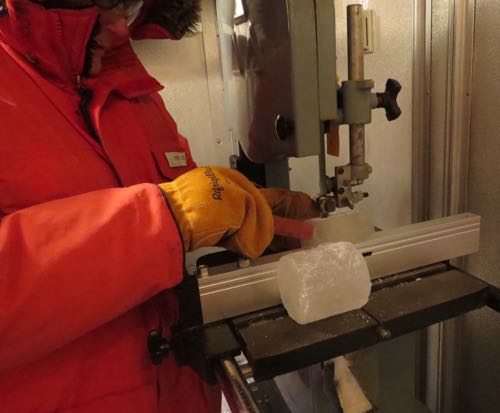 A close-up of my push stick, a plastic ruler. I guess that works.
A close-up of my push stick, a plastic ruler. I guess that works.
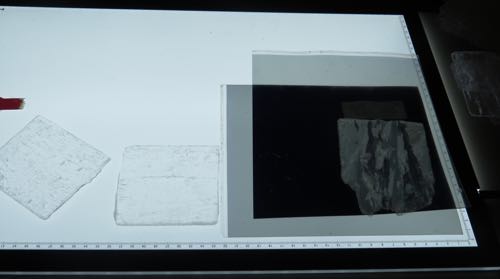 Light table with our thin sections and gels.
Light table with our thin sections and gels.
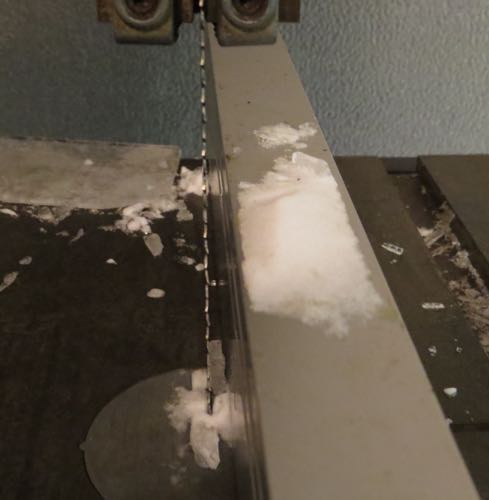 Blade on the saw with guide set at about 3mm.
Blade on the saw with guide set at about 3mm.
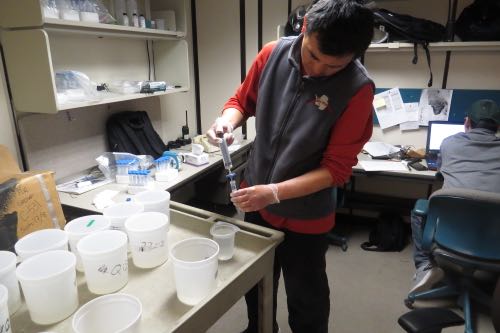 Here is our office/lab set-up. Yongli is taking his samples while Hongjie is crunching data at the computer.
Here is our office/lab set-up. Yongli is taking his samples while Hongjie is crunching data at the computer.
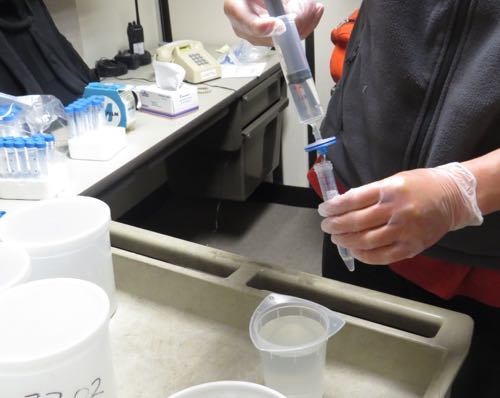 Yongli is injecting water from the melted cores into collection tubes for measuring stable isotopes.
Yongli is injecting water from the melted cores into collection tubes for measuring stable isotopes.
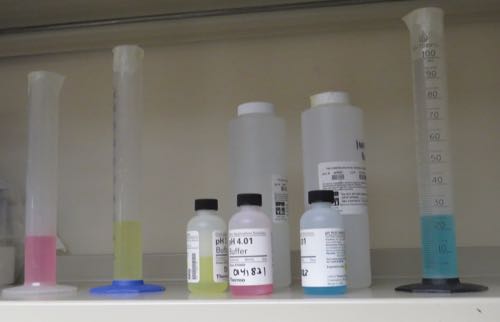 Chemicals for calibrating our tools!
Chemicals for calibrating our tools!
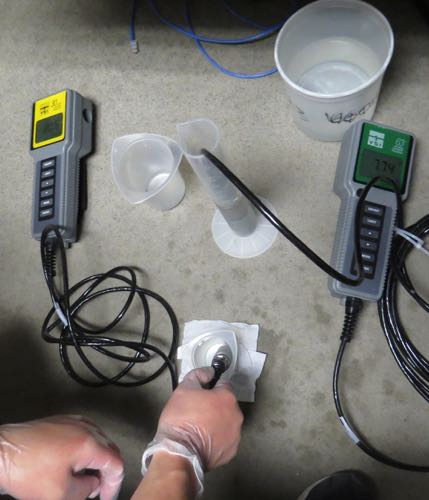 Yongli is taking salinity/conductivity and pH measurements in this pic. Our lab space is limited to our office as we have the cold room work area, but due to Yongli's frost bite, cannot conduct his work here not to mention the samples need to melt to run these tests so, to the office they go!
Yongli is taking salinity/conductivity and pH measurements in this pic. Our lab space is limited to our office as we have the cold room work area, but due to Yongli's frost bite, cannot conduct his work here not to mention the samples need to melt to run these tests so, to the office they go!
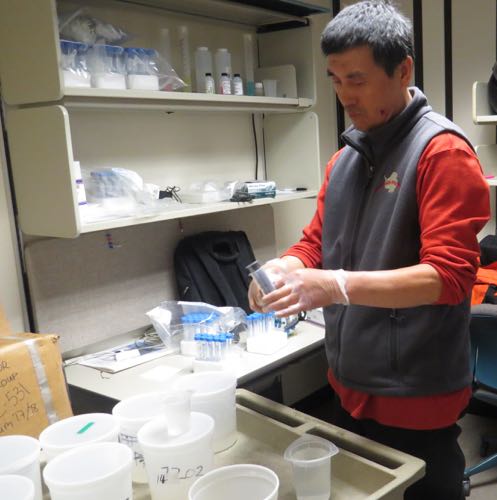 Yongli, taking his work very seriously!
Yongli, taking his work very seriously!
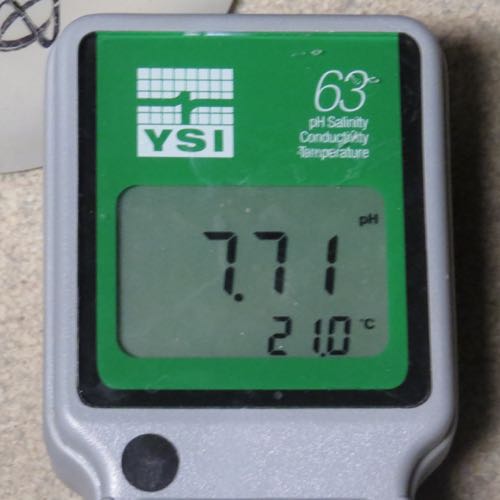 A close look at the probe read-out for pH in this case.
A close look at the probe read-out for pH in this case.
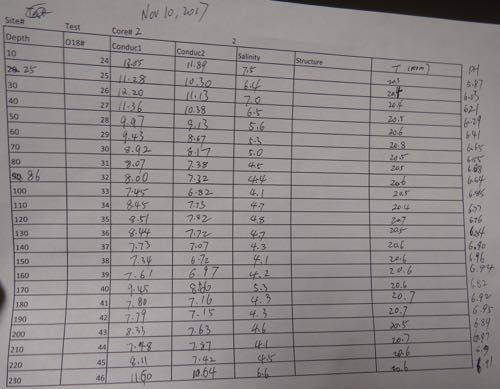 One of the data tables for the all the measurements being collected from the probeware.
One of the data tables for the all the measurements being collected from the probeware.
Today's images are of our lab work from the cold room. I am trying to perfect my technique on using the bandsaw. Cutting thin sections often results in broken pieces that are not usable. Ice breaks fairly easily when it becomes thin and "dry" and at -21˚C, there is no moisture to be had, everything is frozen including the brine (salty water that has a much lower freezing point). How thin can I get while keeping the section intact? That is my challenge. Thinner sections give better pictures and one can more readily determine the ice structure as to columnar, platelet or granular ice and can show where the brine channels are located as well. I am not exactly sure where all of this information will lead, but I do know we are creating a better map/picture of the Ross Sea Ice that will help us to determine how it is changing over the course of seasons and years. That in turn will hopefully help scientists understand the implications of climate change in this area.
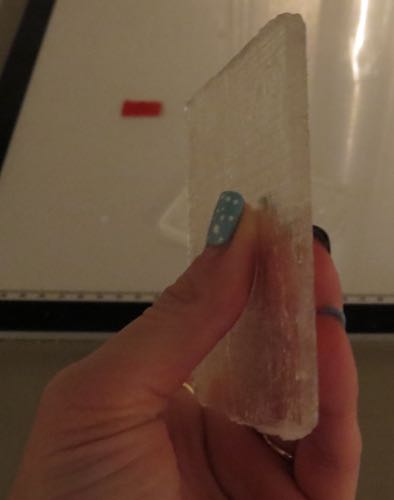 Fairly thin section, about 4 mm. Ideally, 2mm would be best.
Fairly thin section, about 4 mm. Ideally, 2mm would be best.
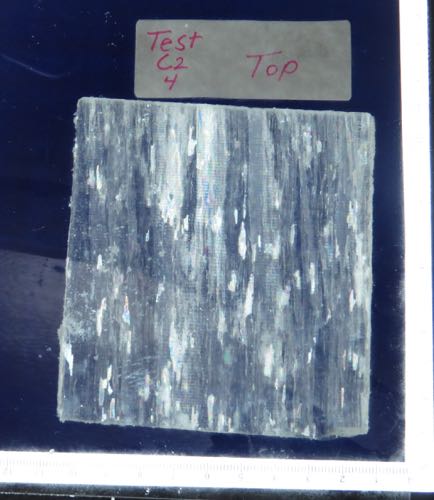 Thin section about 40 cm down from the top of the ice. You can make out a lot of columnar ice with a few brine channels in this pic.
Thin section about 40 cm down from the top of the ice. You can make out a lot of columnar ice with a few brine channels in this pic.
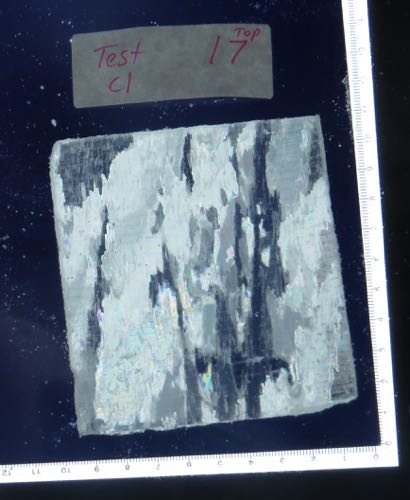 Another thin section at 170 cm down from the top of the ice. Note the changes in the crystal pattern. We are starting to see more platelet ice in this section.
Another thin section at 170 cm down from the top of the ice. Note the changes in the crystal pattern. We are starting to see more platelet ice in this section.
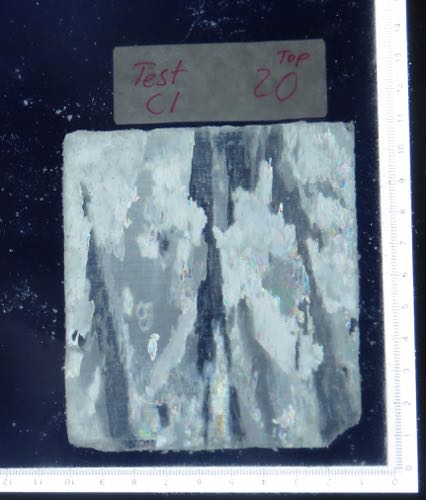 Almost at the bottom, 200 cm down. Significant brine channel at the top.
Almost at the bottom, 200 cm down. Significant brine channel at the top.
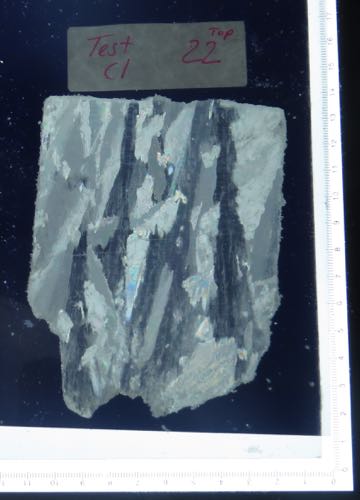 Last section 220 cm down. The very bottom was submerged in sea water and is all platelet ice that is now completely frozen due to the cold room temp. Lots of platelet ice crystal and brine channels allowing the brine (salty water) to escape into the sea!
Last section 220 cm down. The very bottom was submerged in sea water and is all platelet ice that is now completely frozen due to the cold room temp. Lots of platelet ice crystal and brine channels allowing the brine (salty water) to escape into the sea!
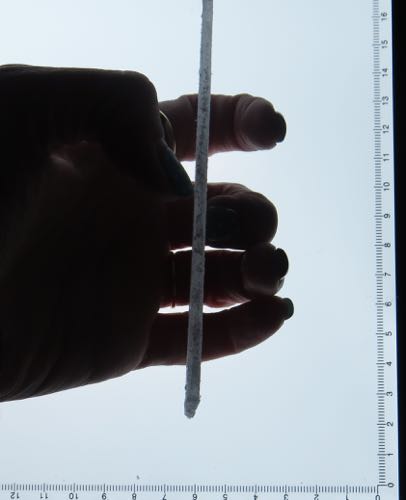 Practice makes perfect. Down to 2mm of thickness. Very fragile!
Practice makes perfect. Down to 2mm of thickness. Very fragile!
Flat Lorax was cold too and decided to warm-up by joining the McMurdo baseball team! He didn't even have to miss any field trips for tryouts! Cards today are for Jonathan in 1st grade and Bryce in APBio who was also in APES last year and will hopefully chuckle over this post!
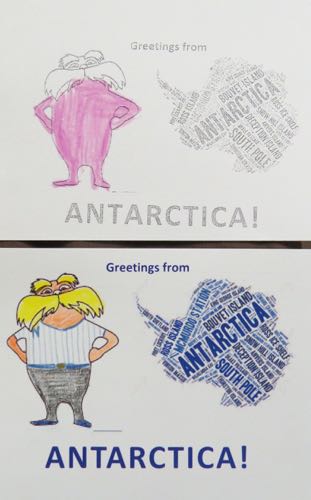 Flat Lorax postcards for Jonathan in 1st grade and Bryce a former great APES student and a current APBio student!
Flat Lorax postcards for Jonathan in 1st grade and Bryce a former great APES student and a current APBio student!

Comments
Add new comment